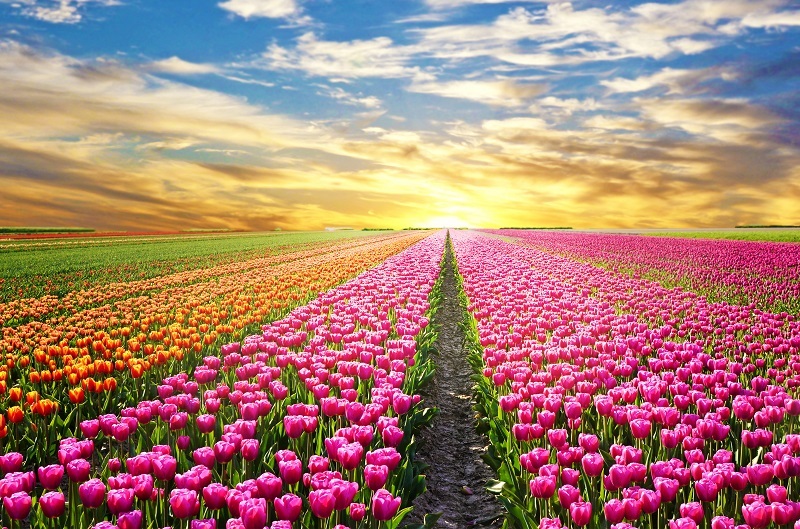Crafting the Ideal Environment for Hydrangeas
Posted on 13/08/2025
Crafting the Ideal Environment for Hydrangeas: An In-Depth Guide
Hydrangeas have long been cherished for their luxuriant blooms and ability to transform gardens into vibrant, enchanting spaces. Crafting the ideal environment for hydrangeas is essential not only for optimal growth but also to ensure enthralling floral displays season after season. Whether you are a novice gardener or a dedicated horticulturist, this comprehensive guide is designed to provide everything you need to know about creating perfect conditions for hydrangeas in your landscape.

Understanding Hydrangeas: Varieties and Unique Needs
Before creating the best environment for hydrangeas, it's imperative to become familiar with the different types of hydrangeas. These elegant shrubs are not one-size-fits-all when it comes to their requirements.
Popular Hydrangea Species
- Hydrangea macrophylla (Bigleaf Hydrangea): Known for their large, mophead or lacecap blooms that change color based on soil pH.
- Hydrangea paniculata (Panicle Hydrangea): Featuring cone-shaped flowers, these hydrangeas are beloved for their hardiness and abundant blooms.
- Hydrangea arborescens (Smooth Hydrangea): Native to North America, smooth hydrangeas offer round, white flower clusters and are tolerant of a variety of conditions.
- Hydrangea quercifolia (Oakleaf Hydrangea): These possess distinctive oak-shaped leaves and thrive in partial shade.
- Hydrangea serrata (Mountain Hydrangea): Similar to bigleaf hydrangeas, but typically more cold-hardy.
*Understanding these varieties is the foundation of crafting optimal conditions for hydrangea success.*
The Role of Soil: Building the Foundation for Hydrangeas
Optimal Soil pH for Hydrangeas
One of the most fascinating aspects of hydrangeas is their ability to alter bloom color based on soil conditions, particularly pH:
- Acidic soil (pH 5.2-5.5): Yields blue or lavender-hued flowers (mainly in Hydrangea macrophylla and serrata).
- Neutral to alkaline soil (pH 6.0-6.2 and above): Results in pink or red shades.
Testing your soil's pH and amending accordingly is essential for customized hydrangea color and vigor.
The Importance of Drainage and Texture
Hydrangeas prefer moist, well-draining soil with ample organic matter. Heavy clay can stunt roots and cause waterlogging, while very sandy soil may dry out too quickly.
- Incorporate compost or well-rotted manure before planting to enrich the soil.
- Add pine bark or leaf mold for improved structure and moisture retention.
Amending and Fertilizing
Hydrangeas are relatively light feeders, but do best with a slow-release balanced fertilizer applied in early spring. Avoid high-nitrogen fertilizers, which can boost leafy growth at the expense of blooms.
- For blue flowers: Apply aluminum sulfate to acidify the soil.
- For pink flowers: Apply dolomitic lime to raise soil pH.
Perfect Light Conditions for Thriving Hydrangeas
Light is a pivotal factor in crafting the perfect environment for hydrangeas. Most hydrangeas thrive best with a combination of sun and shade:
- Morning sun with afternoon shade is ideal, especially in regions with hot summers.
- Too much sun can scorch leaves and reduce bloom size.
- Deep shade can limit flowering and cause weak, leggy growth.
Observe your garden's light patterns across the day to select the best spot for your hydrangeas.
Tailoring Light to Hydrangea Varieties
- Panicle hydrangeas: Can handle more direct sunlight than other types--up to 6 hours daily.
- Bigleaf and oakleaf hydrangeas: Prefer dappled or filtered sunlight to avoid stress and leaf burn.
The Crucial Role of Water
Consistent moisture is vital for hydrangeas, but overwatering can be detrimental. Here's how to get irrigation right when creating ideal conditions for your hydrangea plants:
Watering Guidelines for Optimal Health
- Water deeply once or twice a week rather than shallow daily sprinkles.
- Assess soil moisture by feeling 2-3 inches below the surface; soil should be damp but not soggy.
- Morning watering is best to minimize fungal risks.
*In hot climates, mulching can help retain moisture and protect shallow hydrangea roots.*
Crafting the Best Location: Wind, Space, and Protection
Beyond sunlight and soil, the overall site selection is crucial for crafting the perfect environment for hydrangeas.
Wind Protection for Hydrangeas
- Choose a location shielded from harsh winds, such as near fences or mature shrubs.
- Windbreaks help prevent moisture loss and keep large blooms from being battered.
Allowing Sufficient Space
- Plant hydrangeas at least 3-5 feet apart, depending on variety, to allow airflow and prevent fungal diseases.
- Avoid crowding with aggressive neighbors--hydrangeas fare best with room for their roots and canopy to expand.
Adding Mulch: Why, What, and How
Mulching is a simple yet highly effective step in establishing an optimal environment for hydrangeas. The benefits of mulch include:
- Retaining soil moisture
- Suppressing weeds
- Regulating soil temperature
- Providing slow-release organic nutrients as it decomposes
Apply a 2-3 inch layer of organic mulch--such as shredded bark, pine needles, or compost--around the base of each plant, taking care to keep mulch a few inches from the main stem to prevent rot.
Climate Considerations: Cold, Heat, and Humidity
Hydrangeas are adaptable, but truly thrive when their environmental needs are met according to local climate zones.
Cold Tolerance and Winter Protection
- In zones 3-5, opt for cold-hardy species like Hydrangea arborescens and Hydrangea paniculata.
- Mulch well in late autumn to insulate roots.
- For bigleaf hydrangeas, consider wrapping plants in burlap or covering with straw in harsh winters.
Heat and Humidity
- In hot, humid climates, afternoon shade prevents wilting and leaf scorch.
- Good airflow is essential to reduce fungal diseases that thrive in muggy conditions.
- Regular deadheading and removal of spent blooms can further improve airflow and appearance.
Supporting Healthy Growth and Lush Blooms
Pruning for Structure and Blooms
Correct pruning differs between hydrangea types:
- Bigleaf and mountain hydrangeas: Bloom on old wood--prune immediately after flowering, if necessary.
- Panicle and smooth hydrangeas: Bloom on new wood--prune in late winter or early spring to encourage robust flowering.
Feeding and Additional Care
- Incorporate slow-releasing fertilizers specific to flowering shrubs in spring.
- Monitor for pests such as aphids, spider mites, and keep an eye out for leaf spot or powdery mildew.
- Stake or provide gentle support for heavy flower heads to prevent drooping, especially after rain.
Common Mistakes to Avoid When Creating a Hydrangea-Friendly Zone
- Overwatering or allowing standing water around the roots
- Heavy, unamended clay soil causing poor drainage
- Planting too deeply--hydrangea crowns should sit level with the soil surface
- Fertilizing too late (after midsummer) which can lead to winter kill
- Neglecting pests or bad air circulation, leading to disease
Enhancing Hydrangea Color and Vibrancy
The allure of hydrangeas often lies in their dynamic palette of colors. You can intentionally influence bloom tones by amending your soil:
- For blue blooms: Acidify soil with aluminum sulfate and avoid lime.
- For pink or red hues: Mix in garden lime and limit acidic additives.
- Check pH annually and reapply amendments as colors can revert over time.
*Always test soil before making any adjustments to avoid over-correction!*

Designing with Hydrangeas: Landscape Placement for Impact
Integrate hydrangeas into your landscape to maximize their beauty and showcase their blooms:
- Plant along north or east-facing walls for gentle light and wind protection.
- Use as foundation shrubs, specimen plants, or in mixed borders with perennials.
- Pair with hostas, ferns, or astilbes for layered texture and extended interest.
Conclusion: Your Blueprint for Hydrangea Success
Crafting the ideal environment for hydrangeas is a rewarding investment in both your garden's health and aesthetic. By understanding their specific needs in terms of soil, water, light, and space, you can encourage vigorous growth and breathtaking blooms for years to come. Remember to monitor your plants, adjust conditions as they evolve, and delight in the ever-changing display that well-positioned hydrangeas will bring to your outdoor oasis. Happy gardening!
Latest Posts
Find out what your birth month flower says about you
Effortless Greenery: Best Low-Maintenance Office Plants
Crafting the Ideal Environment for Hydrangeas





